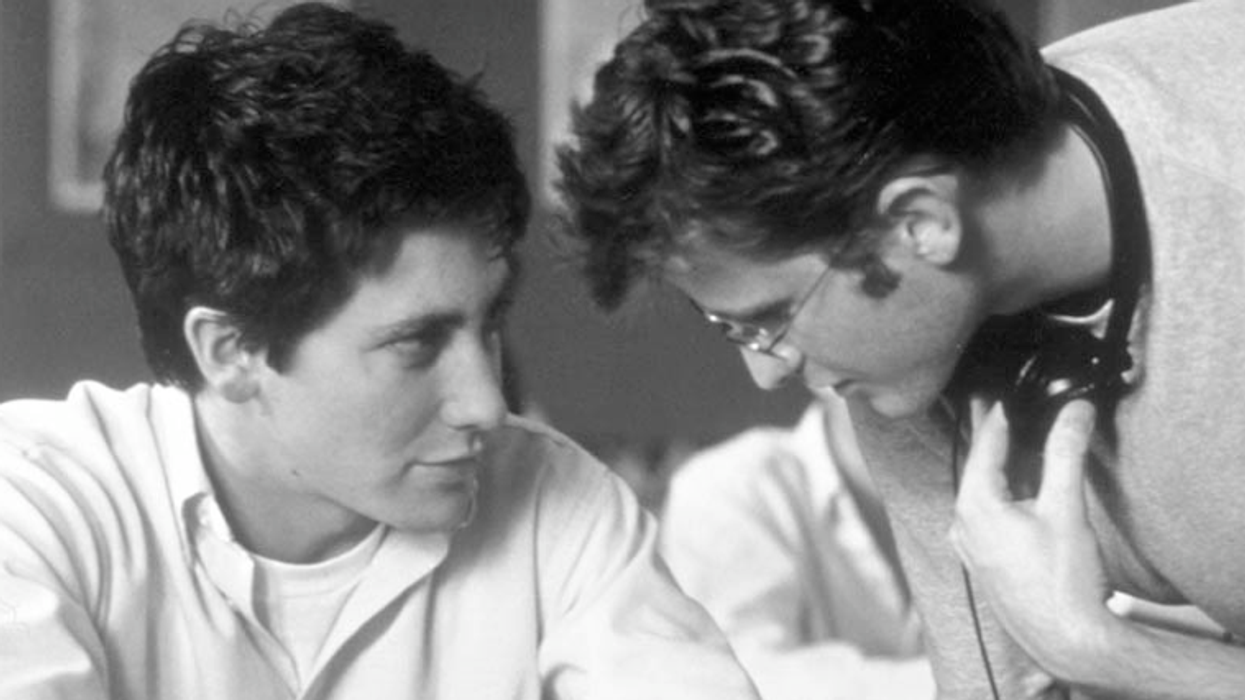Lessons Learned at AFF Script-to-Screen: Donnie Darko with Writer/Director Richard Kelly

For me, Donnie Darko is one of those films that needs to be found. Its Sundance premiere didn't exactly set off fireworks and its subsequent theatrical release in the U.S. in the fall of 2001 was quiet. Thanks to DVD (and a healthy theatrical debut in the UK), though, many people did eventually find this debut feature film from writer/director Richard Kelly, turning it into a cult classic. But even after watching the film, you feel like you are still discovering exactly what Donnie Darko is. So, you turn to the Director's Cut to find more. For me, I did find more -- more questions and even more intriguing themes. Thankfully, all these years later, I had the good fortune to spend almost two hours in conversation with Kelly, watching clips from both the original and director's cut of Donnie Darko, in front of a live audience during a Script-to-Screen panel at the 20th Austin Film Festival & Conference. Here are just a few of the lessons we learned from Kelly about his experiences with his enigmatic first feature.
Less is More
As we compared key sequences of the screenplay to the original cut and the director's cut of Donnie Darko, one of the first things we discussed was the need to tighten up even the most important elements of the story. For example, the first instance where Frank calls to Donnie to "wake up" is much longer in the screenplay than either of the two cuts of the film. I asked Kelly what led to the tightening of this important sequence.
Kelly: Well, the longer dialogue with Frank I believe was just probably the product of novice, you know, bloated screenwriting. Probably to a certain degree. I can’t remember the full conversation. It was probably redundant to a certain degree, or repetitive, maybe. Just too much information. My shots were very stylish and long and drawn out, and those tracking shots -- they’re the kind of shots that, particularly, just add a lot of running time. It’s always been an issue for me. I stage all these fancy shots and then my movies end up being just ridiculously long. It’s hard to cut down. So, that’s the way I like to photograph my films. So, I just think it became more economical to just keep it brief -- keep the conversation brief. You know, he lures him out. There is the date, the time-stamp number. And it’s the end of the world. That’s it -- that’s all you need.
What's Not on the Page: The Eye Motif in the Director's Cut
Few first-time directors get the chance to revisit their films for a director's cut, and when they do, usually the cut merely includes some deleted scenes. The Director's Cut of Donnie Darko, on the other hand, involves explorations of many themes on much deeper levels that Kelly himself hadn't quite figured out during the original edit. In the director's cut of the same "wake up" sequence discussed above, Kelly adds a new montage which starts with an ECU of an eye-opening. This eye motif repeats itself throughout the director's cut and finds its connection to the original cut through the poster of M.C. Escher's "Eye" in Donnie's room.
During our conversation, I asked him specifically why it was important to him to add the eye motif in the director's cut, which was never part of the original screenplay.
Kelly: In terms of the eye, the director’s cut delves more into the science fiction origins of the story and the superhero mythology of the story. It really is kind of in a lot of ways a comic book superhero story. When Jena Malone says to Jake, "Donnie Darko, that’s sounds like a superhero." And he says, "How do you know I’m not?" Because he kind of is. He really does have to be able to put an ax into a gigantic mongrel statue, break into his school, even carry her dead body all the way home like that at the end. It’s a superhuman strength. And it really is a science fiction story in my mind, it is a very valid interpretation to say that it could be a mental illness story. A dream. Or an illusion.
I had someone last night say that Donnie was in rehab the whole time. And that’s fine, sure. He was killing his old self to make his new self healed from the pills. There are so many interpretations that are all valid, but in the director’s cut, I wanted to get my intent of the interpretation that this was a superhero myth in a lot of ways about a guy who has to realign a tangent universe and sort of close this hole in the space time.
And the eyeball to me was a wonderful conceit in terms of opening up the idea of a higher existence or a potentially -- even the discussion of whose eyeball is it? Is that his eyeball? Where is he? Is that his eyeball in some other place? I loved the mystery of it. I loved the intimacy of it. And I loved the idea that whether that eye belongs to Donnie or not, there is a consciousness potentially -- a human consciousness at work.
How to Deal with Scope Creep
As our conversation continued, we eventually circled back to this idea of "less is more" as we found more instances of scripted scenes becoming much shorter and scene endings hitting the cutting room floor. Kelly then explained his struggle with "scope creep" and how he has dealt with it in his subsequent films.
Kelly: [I]f you’re a scientist and you’re working on a scientific project as my Dad did at NASA, the scope of a project begins to creep outward and get more and more ambitious and complex and expensive. That’s all of my films. It’s just always been an issue, the scope continues to creep out and it can’t be, it can’t live in a 2-hour running time, and it becomes incredibly challenging to edit and to digest. It’s just a lot. It just gets too long and complex. So, as I get older I’ve definitely been very mindful of Scope Creep and I’ve got a prescription for it.
Boone: Does that prescription include a trusted editor?
Kelly: Yeah. When it’s me, also, just editing the screenplay and not adding a bunch of stuff, ‘cause I, particularly in the last two films, I would just be adding stuff, improvising stuff with the actors and any idea -- we’d make time to go shoot an additional scene, ‘cause I’m like, "We’re only here once. We’ll never get back here, so I want this little extra thing," and of course it gets cut out of the movie. But I’m like, maybe one day twenty years from now I’ll figure out a way to do something with it. I just -- you want to get as much [as you can], now I’m not like that anymore. The script is much more, very specific. Everything that is written will most likely end up in the final cut, and I’m just not going to torture myself with having 30-40 minutes of deleted scenes ever again, ‘cause it’s just too painful.
Delving Deeper into the Emotional Core of Donnie Darko
Many fans may argue that the director's cut of Donnie Darko offers more clues to the many mysteries in the story, but what may surprise fans is the first deleted scene Kelly chose to replace in the director's cut. Solving the story's mysteries was certainly not the reason to include this particular scene, as Kelly explains:
Kelly: [B]y deepening all of the relationships in the longer version of the film, my hope is that the ending of the movie hits with a greater emotional weight, you know, particularly when he has that scene with his Dad in the backyard, which is the most painful thing that we had to cut for the theatrical release. That scene in the backyard with the Dad was just so important to me. That was the first thing that went back in, because the theatrical cut works very well and I’m very proud of the theatrical cut of the movie, but I really missed that scene with the Dad in the backyard, so, like, that’s the one.
---
NFS would like to thank the Austin Film Festival & Conference, especially Creative Director Erin Hallagan, for allowing us to post excerpts from the transcript of the Script-to-Screen: Donnie Darko panel with Richard Kelly from the 20th AFF.
Badges for the 21st Austin Film Festival & Conference are now available. Until the end of March, enter the exclusive promo code No Film School and get $50 off a Producers Badge. Producers Badges are currently $575, so you can get one for $525 with the promo code, but only until the end of March.
Confirmed conference panelists include Cary Fukunaga (True Detective, Jane Eyre, Sin Nombre), Terry George (Hotel Rwanda, Reservation Road, The Boxer), Peter Gould (writer/creator, Better Call Saul; writer, Breaking Bad), Jim Uhls (Fight Club, Jumper), Whit Stillman (Metropolitan, Last Days of Disco, Damsels in Distress), plus Richard Kelly and many, many more.
Are you a Donnie Darko fan? What lessons have you learned from reading the screenplay and watching the original and director's cut versions of this cult classic? Share your thoughts with us in the comments.
















